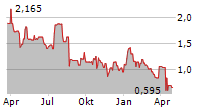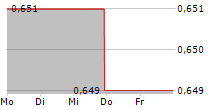RESEARCH TRIANGLE PARK, N.C., Sept. 04, 2025 (GLOBE NEWSWIRE) -- Opus Genetics, Inc. (Nasdaq: IRD), a clinical-stage biopharmaceutical company developing gene therapies for inherited retinal diseases (IRDs) and small-molecule therapies for other ophthalmic disorders, today announced that the first patient has been dosed in LYNX-3, the Company's pivotal Phase 3 clinical trial evaluating Phentolamine Ophthalmic Solution 0.75% in treating significant, chronic night driving impairment in keratorefractive patients with reduced mesopic vision.
LYNX-3 is the second Phase 3 trial for this indication with Fast Track designation from the U.S. Food and Drug Administration (FDA) and is being conducted under a Special Protocol Assessment (SPA). Positive topline results from the first Phase 3 trial, LYNX-2, were announced in June 2025.
Night-vision disturbances, which can include glare, halos, and starbursts, are common in some patients after keratorefractive procedures such as LASIK and currently have no FDA-approved treatment options. Phentolamine Ophthalmic Solution 0.75%, a non-selective a1/a2 adrenergic antagonist, is designed to moderately reduce pupil size in low-light conditions to potentially decrease the impact of aberrant peripheral light rays entering the pupil while maintaining retinal contrast sensitivity.
"Dosing the first patient in LYNX-3 is a significant milestone for our Phentolamine program, which already has one approved indication for the reversal of drug-induced mydriasis, positive Phase 3 data in potentially treating presbyopia, and now an ongoing Phase 3 trial for keratorefractive patients with visual disturbances under mesopic, low-contrast conditions," said George Magrath, M.D., Chief Executive Officer, Opus Genetics. "These positive Phase 3 data represent the opportunity to address a critical need for millions of patients affected by these symptoms."
"Even after otherwise successful refractive surgery, such as LASIK, some patients can experience visual quality challenges in low-light conditions," said Jay Pepose, M.D., Ph.D., Chief Medical Advisor, Opus Genetics. "Following the positive results from LYNX-2, the LYNX-3 study is the second pivotal Phase 3 study designed to further evaluate whether Phentolamine Ophthalmic Solution 0.75% can meaningfully improve functional dim light vision and reduce patient-reported glare, starburst and halos, which could represent a significant advance in post-refractive surgical care."
About LYNX-3
LYNX-3 is a multicenter, randomized, double-masked, placebo-controlled Phase 3 trial that will enroll approximately 200 adults with documented decreased visual acuity in mesopic (low-light) conditions following keratorefractive surgery, including Laser-Assisted In Situ Keratomileusis (LASIK), Photorefractive Keratectomy (PRK), Small-Incision Lenticule Extraction (SMILE), Radial Keratotomy (RK). Participants will be randomized 1:1 to receive once-daily evening dosing of Phentolamine Ophthalmic Solution 0.75% or placebo for approximately two weeks. LYNX-3 is the second of two, pivotal Phase 3 studies and follows the same study design and patient population as the first study, LYNX-2.
The primary endpoint is the percentage of participants achieving a =15-letter Early Treatment Diabetic Retinopathy Study (ETDRS) (=3-line) improvement from baseline in mesopic low-contrast visual acuity (mLCVA) in the study eye at Day 15. Key secondary endpoints include patient-reported outcomes related to night driving, glare, halos, and starbursts, as well as binocular visual function measures. Safety assessments will include ocular and systemic evaluations.
About Phentolamine Ophthalmic Solution 0.75%
Phentolamine Ophthalmic Solution 0.75% is a relatively non-selective alpha-1 and alpha-2 adrenergic antagonist to reduce pupil size, administered as an eye drop. It works by blocking the alpha-1 receptors found on the radial iris dilator muscles, which are activated by the alpha-1 adrenergic receptors. Phentolamine Ophthalmic Solution 0.75% is designed to reduce pupil diameter through a sympatholytic mechanism of action that avoids engaging the ciliary muscle, potentially reducing risks such as retinal tears or detachment associated with older parasympathomimetic agents. Phentolamine Ophthalmic Solution 0.75% has successfully completed a Phase 3 program for presbyopia (VEGA clinical program) and is being evaluated in a Phase 3 program for the treatment of dim (mesopic) light vision disturbances (sometimes referred to as DLD) after keratorefractive surgery (LYNX clinical program). The U.S. FDA granted Fast Track designation to Phentolamine Ophthalmic Solution 0.75% for the treatment of significant, chronic night driving impairment with concomitant increased risk of motor vehicle accidents and debilitating loss of best spectacle corrected mesopic vision in keratorefractive patients with photic phenomena (i.e., glare, halos, starburst).
About Opus Genetics
Opus Genetics is a clinical-stage biopharmaceutical company developing gene therapies for the treatment of inherited retinal diseases (IRDs) and small molecule therapies for other ophthalmic disorders. The Company's pipeline features AAV-based gene therapies targeting inherited retinal diseases including Leber congenital amaurosis (LCA), bestrophinopathy, and retinitis pigmentosa. Its lead gene therapy candidates are OPGx-LCA5, which is in an ongoing Phase 1/2 trial for LCA5-related mutations, and OPGx-BEST1, a gene therapy targeting BEST1-related retinal degeneration. Opus Genetics is also advancing Phentolamine Ophthalmic Solution 0.75%, a partnered therapy currently approved in one indication and being studied in two Phase 3 programs for presbyopia and reduced low light vision and nighttime visual disturbances. The Company is based in Research Triangle Park, NC. For more information, visit www.opusgtx.com.
Forward-Looking Statements
This press release contains forward-looking statements within the meaning of the Private Securities Litigation Reform Act of 1995. Such statements include, but are not limited to, expectations regarding us, our business prospects and our results of operations and are subject to certain risks and uncertainties posed by many factors and events that could cause our actual business, prospects and results of operations to differ materially from those anticipated by such forward-looking statements. Factors that could cause or contribute to such differences include, but are not limited to, those described under the heading "Risk Factors" included in our Annual Report on Form 10-K for the fiscal year ended December 31, 2024, our Quarterly Reports on Form 10-Q for the quarters ended March 31, 2025 and June 30, 2025, and our other filings with the U.S. Securities and Exchange Commission. Readers are cautioned not to place undue reliance on these forward-looking statements, which speak only as of the date hereof. These forward-looking statements are based upon our current expectations and involve assumptions that may never materialize or may prove to be incorrect. Actual results and the timing of events could differ materially from those anticipated in such forward-looking statements as a result of various risks and uncertainties. In some cases, you can identify forward-looking statements by the following words: "anticipate," "believe," "continue," "could," "estimate," "expect," "intend," "aim," "may," "ongoing," "plan," "potential," "predict," "project," "should," "will," "would" or the negative of these terms or other comparable terminology, although not all forward-looking statements contain these words. We undertake no obligation to revise any forward-looking statements in order to reflect events or circumstances that might subsequently arise.
Contacts:
Investors
Jenny Kobin
Remy Bernarda
IR Advisory Solutions
ir@opusgtx.com
Media
Kimberly Ha
KKH Advisors
917-291-5744
kimberly.ha@kkhadvisors.com
Source: Opus Genetics, Inc.



